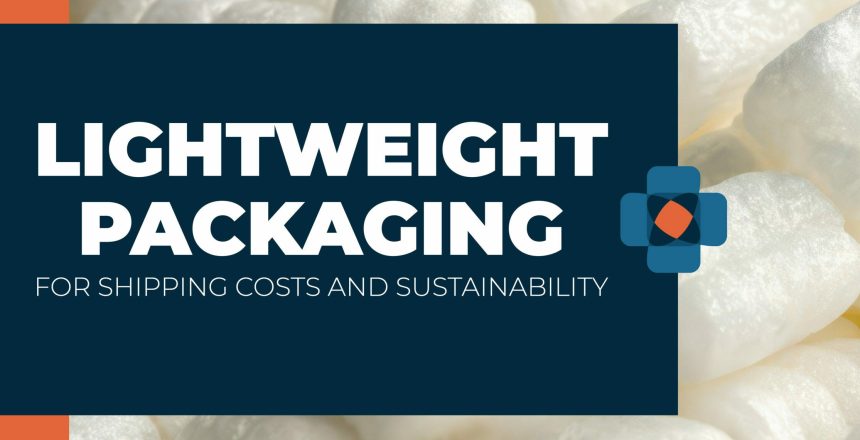When it comes to improving logistics efficiency and reducing environmental impact, lightweight packaging is one of the smartest strategies businesses can adopt. By minimizing material usage and package weight, companies can significantly cut shipping costs while also advancing their sustainability goals. From e-commerce to food distribution to industrial packaging, the benefits of lightweight materials are being realized across nearly every industry.
Reducing Shipping Costs with Lightweight Materials
Shipping costs are heavily influenced by weight. Whether you’re shipping via parcel service, freight carrier or air, a lighter package can translate directly into lower costs per unit. This is particularly important as dimensional weight pricing continues to impact how carriers calculate shipping charges. Using lightweight materials such as corrugated inserts, polyethylene films and advanced molded fiber options allows businesses to maximize volume efficiency while minimizing actual shipping weight.
In high-volume operations, even small weight reductions per package can result in significant cost savings over time. For example, shaving just a few ounces off each shipment can add up to thousands of dollars saved annually in fuel charges, freight rates and last-mile delivery expenses.
Enhancing Sustainability Through Smarter Packaging
Lightweight packaging also contributes to a more sustainable supply chain. Reducing material usage decreases the environmental footprint of each package, from raw material extraction to manufacturing and end-of-life disposal. Fewer materials mean less waste, and lighter shipments help lower greenhouse gas emissions during transportation.
Modern lightweight packaging solutions often incorporate recyclable or compostable materials, making it easier for companies to meet sustainability standards without compromising on performance. Whether it’s using thinner film gauges for stretch wrapping or switching to eco-friendly corrugated solutions, these upgrades support circular economy goals while reinforcing a company’s environmental values.
Balancing Protection and Performance
A common misconception is that lighter packaging sacrifices strength or protection. Today’s materials technology has advanced significantly, offering high-performance options that are both strong and lightweight. Engineered films, die-cut corrugated structures and molded pulp components can provide the same—if not better—durability and protection as heavier alternatives.
The key is in smart design. Packaging engineers can tailor solutions to your product’s specific shape, weight and fragility to ensure optimal protection while keeping weight and waste to a minimum.
Custom Lightweight Solutions from First Packaging Systems
At First Packaging Systems, we specialize in helping businesses strike the ideal balance between performance, cost and sustainability. Our team works closely with yours to identify lightweight packaging options that meet your needs—from protective cushioning and void fill to palletizing and transport.
We evaluate each component of your packaging system for optimization opportunities, whether it’s reducing corrugated thickness, replacing bulky foam with recyclable alternatives or rethinking your overall box configuration. The result is a smarter, lighter package that helps you lower shipping costs, reduce your carbon footprint and streamline operations.
Final Thoughts
Lightweight packaging is more than a cost-cutting measure. It’s a long-term investment in operational efficiency and environmental responsibility. As shipping costs continue to rise and sustainability expectations grow, now is the time to explore how lighter packaging can make a big impact on your business. Let First Packaging Systems help you make that transition with innovative, custom-designed solutions that move your products—and your brand—forward. Contact us today to learn more.
